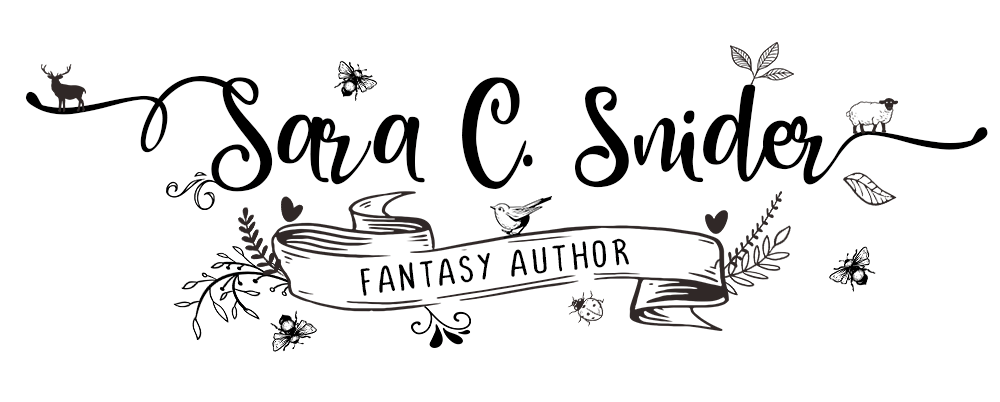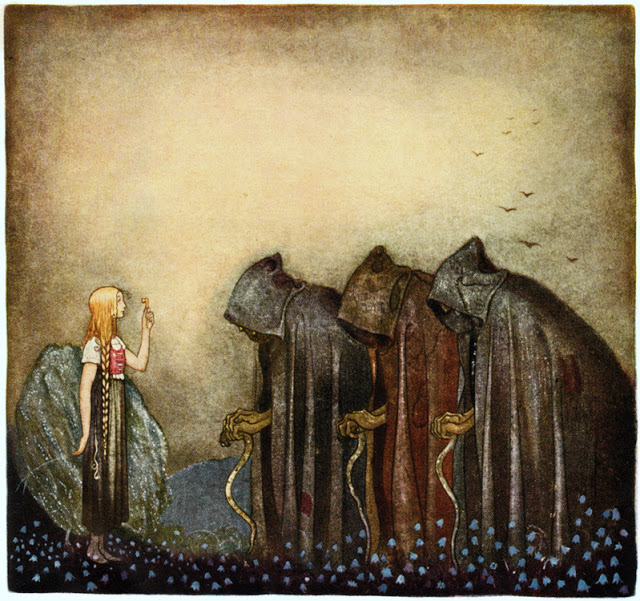There’s a fantasy and science fiction bookstore in Stockholm I like to visit on occasion. When I do, I usually walk out with a pile of books to add to my already towering to-be-read pile, and my last visit there was no exception.
Incidentally, that was the visit where I bought The Incorruptibles by John Hornor Jacobs, despite the fact that there was no blurb on the back cover or inside or anywhere. It was all just propaganda/hype from reviews and such, which I often ignore. I was annoyed and kept ranting, “Why is there no blurb? Do they think they don’t need one?” etc. I think I was mostly annoyed because I was curious and wanted to read it, but I didn’t want to reward that little marketing ploy. Anders, bless him, just shook his head while I ranted and took the book from me and added it to the pile. I’m actually reading it now and enjoying it, so it all worked out. Also, I will say it was kind of exciting starting that book. It was like opening an unlabeled mystery tin can, which could either contain tasty cling peaches in light syrup, or some kind of meat-like hash made with cigarette ashes and rat whiskers.
Anyway, to get on topic, that particular visit was also when I bought this cool illustrated book about Nordic Faeries by Johan Egerkrans. In fact, that’s the title I’d give it if I translated the Swedish title of Nordiska Väsen to English. It reminds me a lot of the book Faeries by Brian Froud and Alan Lee that I fell in love with as a kid, and which I still hold largely responsible for my current faerie infatuation.
I’ve yet to read through all the text in Nordiska Väsen, but I’ve enjoyed looking at the illustrations. The style is more whimsical than scary or serious, but not too whimsical that it looks overly silly or childish. They’re cozy illustrations that make me wish I were there. I partly blame this book for the arrival of Tum in my Hazel and Holly series, as the illustration of the gnome-like kvarngubbe (“old man of the mill”) holding a lantern is one of my favorites, and I just felt like I wanted a lantern-bearing gnome of my own.
Some of these faeries are new to me, like the gruvrå—which I suppose translates to “woman of the mines”, similar to a skogsrå. The gruvrå is a pale, beautiful woman who appears to miners while down in the mines. She frequently wears grey dresses, but if she’s seen wearing black, then it’s a foreboding of death. She is both feared and honored. Offerings made to the gruvrå is said to have led to discoveries of silver.
Some faeries are similar to ones in other cultures, like the bäckahäst (“river horse”), which seems to be very similar to the Scottish Kelpie, in that they like to lure people onto their backs and then drown them. But it can also be mischievous like the Irish Phooka, and just take people for a terrifying ride before dumping them in the middle of nowhere, leaving them to figure out how to get back home.
And then there’s the disturbing story of the kyrkogrim – or “church grim” I suppose is how it’s translated. Apparently these are creatures that guard churches and the surrounding grounds. They’ll throw out people slacking off or causing disturbances during church service, and at night they’ll scare off grave robbers. Apparently, to get a Church Grim, a live animal was walled in the church while it was being built. If that didn’t happen, then the roll went to whoever was first to be buried in the churchyard. Creepy. And cruel, as far as the poor animal goes. Church Grims take on a monstrous form of the creature it was in life, which could be dog, cat, ox, rooster, or person.
I actually found a free little ebook of faery tales called Bedtime Stories for Awful Children. It’s illustrated and available in a few different languages. It’s apparently promo material for a story app (which I might actually check out), but I thought the book charming in its own right.
There’s also a website called Swedish Fairy Tales and Legends that lists 56 different tales right there on the site. I haven’t read them yet, but they’re on that ever-growing list.
Do you have any favorite faery tales or creatures?
Featured Image: Lena Held Up the Key, by John Bauer


My childhood was full of extremes when it came to the fae. I was inundated with flower fairy gifts as a child, so cute Edwardian fairies added to the whole Disney sweetness, but then I read The Brothers Grimm and Scottish folktales and then I watched Labyrinth where fairies bite :). And then I read Neil Gaiman’s Sandman books and he has almost as much contempt for fairies as he does for angels.
I loved reading fairy tales as a child and my fascination with the domestic superstitions of all cultures has only grown with time. Of all fantastic beasts, I think Dragons are my favourite, but if I limit to faerie folk, then I’ve always had a soft spot for gnomes, ever since watching the ‘David The Gnome’ cartoon (https://en.wikipedia.org/wiki/The_World_of_David_the_Gnome). 🙂
You know, I think discovering the darker side of faeries is what made me fall in love with them. The cute, Disney-esque ones were all well and good, but that Faeries book I mentioned in the post… some of those pictures are pretty dark and creepy. I’m not sure what that says about me, but there was no going back after that. 😉
I love dragons. I take great joy in the fact I was born in the year of the dragon. And gnomes are cute. I haven’t seen David the Gnome. Reading the Wiki, it sounds kind of Swedish, but it looks like it got started in Spain, which is interesting. Swedes love gnomes. They call them “tomtar” and they’re everywhere when Christmas rolls around. It’s great. 🙂
Hi Sara – fascinating post … and wonderful to read – as I know so little about Norse mythology. I love fairy stories as a kid and we had them all in huge colour bound editions … but I never went further with my reading.
I’ve downloaded the stories and looked at/noted the Swedish tales .. great finds for you .. Sweden has a wealth of information .. cheers Hilary
Thanks, Hilary. Most of what I know about Norse mythology, I learned after I moved here. So you’re not alone! 😉 Hopefully you’ll enjoy those stories!
I love finding folktale collections in used book stores! It’s the best 🙂 I am currently reading a Bavarian folktale collection, and I am loving their idea of Dwarfs. They are adorable.
I really need to go into used bookstores more often. I’ve had the idea it would be really cool to find an old Swedish book of folktales that’s out of print (and in the public domain), and then translate and publish it. But I actually need to go into old bookstores for that. 😉
I loved the various animated Disney films as a kid, but the actual stories they were taken from were pretty dark. I love and am pretty familiar with Grimm’s Fairy Tales, and I’m familiar with some of the stories from Norse mythology, but I do want to read more fairy tales and legends from other cultures. There are a lot of good stories out there. I love dragons and gnomes too. 🙂
I also loved Disney movies (and still love the classic ones), but I can’t help but think how entertaining it might be if Disney came out with a “historically correct” version of their animated films. It could be a director’s cut version or something, hehe. 😉
It would be really interesting to see a historically correct version of the animated Disney films…Although they would likely be a lot less family friendly. 🙂 I love Greek and Roman mythology too. Some of those Greek and Roman gods and goddesses were spoiled brats. Great stories.
Yeah, you probably wouldn’t want to take your kids to those movies. 😉 And I also love Greek and Roman mythology. Those could get turned into soap operas. Everyone’s always sleeping with everyone else (or trying to), and then getting turned into some plant/animal as a result. Good times! 😉
Fun! I love fairy tales. I’m reading all the original Grimm tales and thinking to myself how much I’d love to collect all sorts of old fairy tale collections. Oh, and I love that store, by the way. It’s a good thing I don’t go often, I’d spend all of our money there.
I love them too! I actually have quite a few fairy tale books, but of course I’ve yet to actually read through all of them. That would just be sensible. And I hear you about the store. I’d be even worse off for shelf space than I am now. 😉
That book is gorgeous! I did a quick search but it doesn’t seem to be available in the UK, which is a shame – not that I could have read it anyway, but I could have looked at the pictures 😀
The Scottish equivalent of the pooka is the bogle. I’ll be mentioning him in my next post 🙂
I didn’t know that about the bogle. Cool! 😀 As for the book, if you’re really dedicated, it looks like bokus.com (link) will ship to the UK, but you’ll have to navigate in Swedish through the buying process as I don’t think the site has an English translation. OR, maybe you could talk with a local book shop, and maybe they could order it in for you. That would probably be the easier option. It really is gorgeous though. 🙂